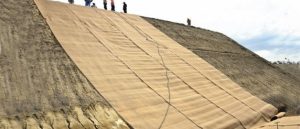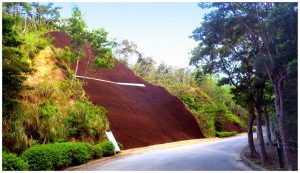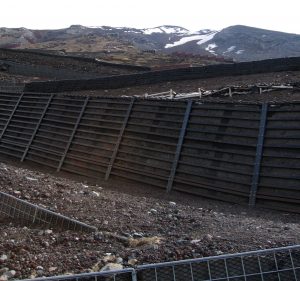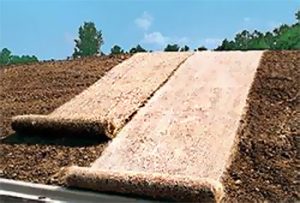Prevention Ideas
– Vegetation
– Geotextiles
– Mulch
– Retaining Walls
– Erosion Mats
Vegetation Definition: Plants considered collectively, especially found in a particular area or habitat.
Geotextiles Definition: They are permeable fabrics which, when used in association with soil, have the ability to separate, filter, reinforce, protect, or drain.
Mulch Definition: A material ( such as decaying leaves, bark, or compost ) spread around to enrich or insulate the soil.
Retaining Wall Definition: A wall that holds back earth or water.
Erosion Mats Definition: A protective soil cover of straw, wood, coconut fiber, or other suitable plant residue, or plastic fibers formed into a mat, usually with a plastic or biodegradable mesh on one or both sides.
Vegetation prevents erosion in several different ways. First, the roots of plants hold the soil in place, keeping it from washing away during rainstorms. Second, vegetation provides ground cover which keeps harsh rain from washing away soil. Lastly, trees help to prevent high winds from blowing away top soil because the trees provide windbreaks, which can prevent high winds.
Geotextiles help stop erosion. They allow water to drain without carrying runoff and sediment with it. Geotextiles are used for stabilization. They also help prevent excessive pollution. Geotextiles also help to protect steep hills from being eroded.
Mulch spread over the surface of the soil can reduce the rainfall from hitting the soil, and can act as coverage from wind. Mulch can also limit how much water reaches the soil. Also, it can encourage seeds to sprout and protect seedlings.
Retaining walls are short walls that help prevent soil from sliding down any farther.
Erosion mats are laid over a mass of eroding land and the individual fibers help keep the soil from eroding.





